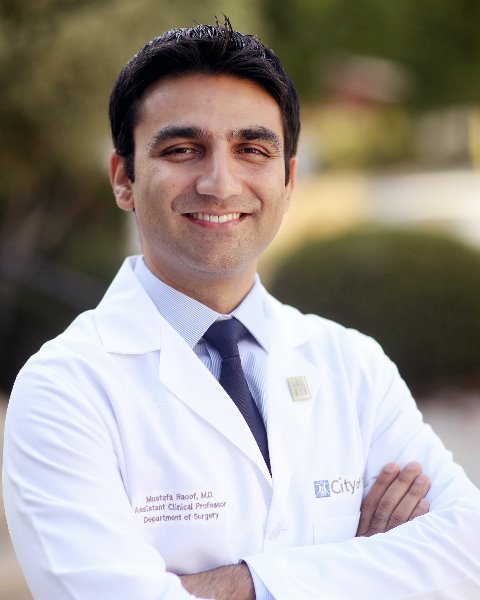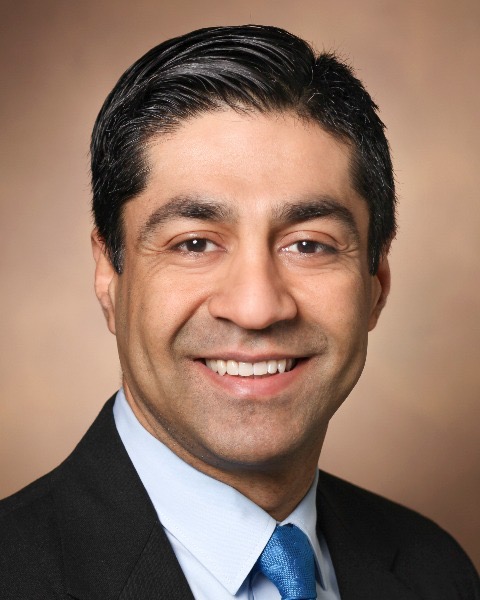PSM
P4: Integrated Characterization of Cell types, States, and Molecular Programs in Disseminated Appendiceal Neoplasms

Mustafa Raoof, MD, MS
Assistant Professor
Division of Surgical Oncology, City of Hope National Medical Center, Duarte, CA
Duarte, California, United States- LB
Linh Bui, PhD
Staff Scientist
Translational Genomics, United States - XC
Xu Cao, PhD
Postdoctoral Fellow
City of Hope Cancer Center, United States - JW
Jinhui Wang, PhD
Associate Research Professor
City of Hope Cancer Center, United States - FM
Fan Meng, PhD
Postdoctoral Fellow
City of Hope Cancer Center, United States - MF
Mingye Feng, PhD
Associate Professor
City of Hope Cancer Center, United States - LA
Leonidas Arvanitis, MD
Associate Clinical Professor
City of Hope Cancer Center, United States - RM
Rifat Mannan, n/a
Associate Clinical Professor
Department of Pathology, City of Hope National Medical Center, United States - YW
Yanghee Woo, MD
Associate Professor
City of Hope Cancer Center
Duarte, CA, United States 
Kamran Idrees, MD, MSCI, MMHC, FACS
Associate Professor of Surgery
Vanderbilt University Medical Center
Nashville, Tennessee, United States- NB
Nicholas Banovich, PhD
Associate Professor
Translational Genomics, United States 
Mustafa Raoof, MD, MS
Assistant Professor
Division of Surgical Oncology, City of Hope National Medical Center, Duarte, CA
Duarte, California, United States
Mustafa Raoof, MD, MS
Assistant Professor
Division of Surgical Oncology, City of Hope National Medical Center, Duarte, CA
Duarte, California, United States
Oral Poster Presenter(s)
Author(s)
Submitter(s)
Author(s)
Despite the rise in incidence of appendiceal neoplasms in recent years, lack of understanding of cell types, cell-cell interactions, and molecular programs has , limited our ability to make therapeutic progress.
Methods:
To comprehensively characterize the cell types and molecular programs in epithelial appendiceal neoplasms, we performed integrated single-cell RNA-sequencing (10X genomics) of 5 normal appendix and 11 peritoneal metastases samples from 4 histologic subtypes: Low-grade appendiceal mucinous neoplasm (LAMN, n=2), low-grade mucinous adenocarcinoma (LGMA, n=4), Moderate/ high grade non-mucinous adenocarcinoma (MHNA, n=3), and goblet cell adenocarcinoma (GCA, n=2). Histologic validation was performed using multiplex chromogenic immunohistochemistry.
Results:
A total of 126,998 cells from 16 patient samples were profiled. Using marker-based annotations, we identified eight cell lineages that were further characterized into 33 distinct cell types/cell states with seven being cancer-specific (Fig 1). Unsupervised clustering grouped the majority of tumor cells into pathology-specific clusters, demonstrating a high degree of transcriptional divergence across the histologic spectrum. Across histologies tumor cells expressed high levels of goblet cell marker genes. In contrast to other pathologies, GCA goblet cells were unique in high expression of MUC5B. We identified unique histology specific changes in the tumor immune microenvironment and identified the presence of effector immune infiltrates with tumor cells.While CD4+ T cells were similarly distributed across histology, CD8+ T cell abundance varied with highest prevalence in LGMA and LAMN samples, intermediate in GCA samples, and low in MHNA samples. We identified a novel FAP+ cancer-associated fibroblast (CAF) subtype that we named fiCAFs (fibrotic CAFs). These fiCAFs express high levels of genes involved in fibrosis and are present at a high frequency in MHNA (moderate/high non-mucinous adenocarcinomas) and GCA, the two high grade appendiceal neoplasms. We identified significant differences in cell-cell communication among tumor cells and between tumor cells with other cell types in the tumor microenvironment across the histologic spectrum.
Conclusions:
Together, our study provides high-resolution insights into the intricacy and plasticity of appendiceal neoplasms throughout the histologic spectrum. These findings will lay the foundation for mechanistic studies focused on therapeutic development for appendiceal neoplasms.
Learning Objectives:
- Upon completion, participant will be able to describe the heterogeneity of cell types in appendiceal cancer
- Upon completion, participant will be able to list the dominant cellular features of appendiceal cancer peritoneal metastases
- Upon completion, participant will be able to describe the key molecular programs across the histologic spectrum of appendiceal cancer
